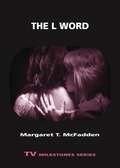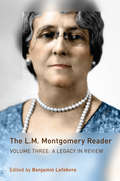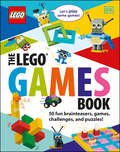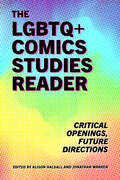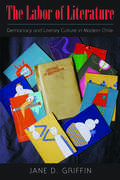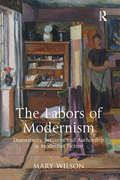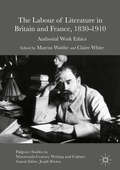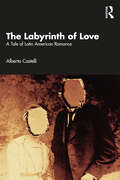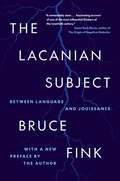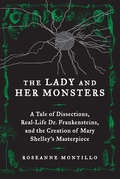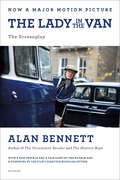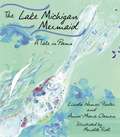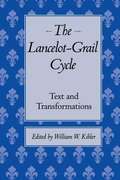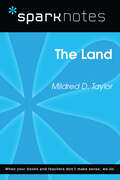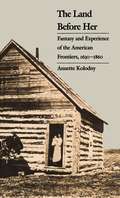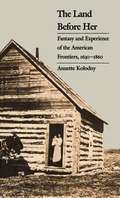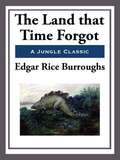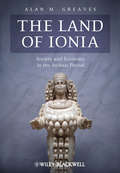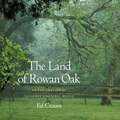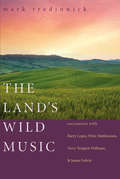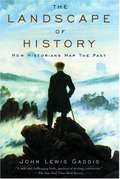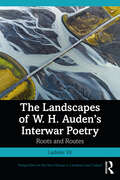- Table View
- List View
The L Word
by Margaret T. McfaddenIn January 2004, Showtime debuted The L Word, the first prime-time commercial drama to center around lesbian characters. Over the course of six seasons, the show depicted the lives and loves of an evolving circle of friends in West Hollywood, California, and was widely read as evidence of changing social attitudes toward gay people. Building on immediate critical attention, the show reigned as Showtime's most popular for its first three seasons and earned a large and enthusiastic audience. In The L Word, author Margaret T. McFadden argues that the show is important for its subject matter, its extended and deeply literate commentary on the history of representation of lesbians in popular media, and the formal innovations it deployed to rewrite that history. McFadden shows that the program's creators, led by executive producer Ilene Chaiken, were well aware of the assumptions and expectations that viewers would bring to it after a history of stereotypical depictions of lesbians on television. They sought to satisfy a diverse group of viewers who wanted honest and appealing portrayals of their lives while still attracting a large enough mainstream audience to make The L Word commercially viable. In five chapters, McFadden explores how the show tackled these problems of representation by using reflexivity as a strategy to make meaning, undertaking a complicitous critique of Hollywood, skillfully using a soap-drama format to draw in its audience, and ultimately creating its own complex representation of a lesbian community. While deconstructing the history of misrepresentation of lesbians, The L Word's new modes of storytelling and new perspectives made many aspects of lesbian experience, history, and culture visible to a large audience. Fans of the show as well as readers interested in cultural studies and gay and lesbian pop cultural history will enjoy this astute volume.
The L.M. Montgomery Reader
by Benjamin LefebvreThe L.M. Montgomery Reader assembles significant rediscovered primary material on one of Canada's most enduringly popular authors throughout her high-profile career and after her death. Each of its three volumes gathers pieces published all over the world to set the stage for a much-needed reassessment of Montgomery's literary reputation. Much of the material is freshly unearthed from archives and digital collections and has never before been published in book form.The selections appearing in this first volume focus on Montgomery's role as a public celebrity and author of the resoundingly successful Anne of Green Gables (1908). They give a strong impression of her as a writer and cultural critic as she discusses a range of topics with wit, wisdom, and humour, including the natural landscape of Prince Edward Island, her wide readership, anxieties about modernity, and the continued relevance of "old ideals." These essays and interviews, joined by a number of additional pieces that discuss her work's literary and cultural value in relation to an emerging canon of Canadian literature, make up nearly one hundred selections in all.Each volume is accompanied by an extensive introduction and detailed commentary by leading Montgomery scholar Benjamin Lefebvre that trace the interplay between the author and the critic, as well as between the private and the public Montgomery. This volume - and the Reader as a whole - adds tremendously to our understanding and appreciation of Montgomery's legacy as a Canadian author and as a literary celebrity both during and beyond her lifetime.
The L.M. Montgomery Reader: Volume Three
by Benjamin LefebvreThe final volume of The L.M. Montgomery Reader, A Legacy in Review examines a long overlooked portion of Montgomery's critical reception: reviews of her books. Although Montgomery downplayed the impact that reviews had on her writing career, claiming to be amused and tolerant of reviewers' contradictory opinions about her work, she nevertheless cared enough to keep a large percentage of them in scrapbooks as an archive of her career.Edited by leading Montgomery scholar Benjamin Lefebvre, this volume presents more than four hundred reviews from eight countries that raise questions about and offer reflections on gender, genre, setting, character, audience, and nationalism, much of which anticipated the scholarship that has thrived in the last four decades. Lefebvre's extended introduction and chapter headnotes place the reviews in the context of Montgomery's literary career and trace the evolution of attitudes to her work, and his epilogue examines the reception of Montgomery's books that were published posthumously.A comprehensive account of the reception of Montgomery's books, published during and after her lifetime, A Legacy in Review is the illuminating final volume of this important new resource for L.M. Montgomery scholars and fans around the world.
The LEGO Games Book: 50 Fun Brainteasers, Games, Challenges, and Puzzles!
by Tori KosaraBuild in some time for fun!Who can stack the tallest tower in 60 seconds? Can anyone solve the puzzle cube? With more than 50 fun challenges, puzzles, brainteasers, and games, get out your LEGO® bricks and put your friends and family to the test.©2020 The LEGO Group.
The LGBTQ+ Comics Studies Reader: Critical Openings, Future Directions
by Alison Halsall and Jonathan WarrenWinner of the 2023 Eisner Award for Best Academic/Scholarly WorkContributions by Michelle Ann Abate, William S. Armour, Alison Bechdel, Jennifer Camper, Tesla Cariani, Matthew Cheney, Hillary Chute, Edmond (Edo) Ernest dit Alban, Ramzi Fawaz, Margaret Galvan, Justin Hall, Alison Halsall, Lara Hedberg, Susanne Hochreiter, Sheena C. Howard, Rebecca Hutton, remus jackson, Keiko Miyajima, Chinmay Murali, Marina Rauchenbacher, Katharina Serles, Sathyaraj Venkatesan, Jonathan Warren, and Lin YoungThe LGBTQ+ Comics Studies Reader explores the exemplary trove of LGBTQ+ comics that coalesced in the underground and alternative comix scenes of the mid-1960s and in the decades after. Through insightful essays and interviews with leading comics figures, volume contributors illuminate the critical opportunities, current interactions, and future directions of these comics. This heavily illustrated volume engages with the work of preeminent artists across the globe, such as Howard Cruse, Edie Fake, Justin Hall, Jennifer Camper, and Alison Bechdel, whose iconic artwork is reproduced within the volume. Further, it addresses and questions the possibilities of LGBTQ+ comics from various scholarly positions and multiple geographical vantages, covering a range of queer lived experience. Along the way, certain LGBTQ+ touchstones emerge organically and inevitably—pride, coming out, chosen families, sexual health, gender, risk, and liberation. Featuring comics figures across the gamut of the industry, from renowned scholars to emerging creators and webcomics artists, the reader explores a range of approaches to LGBTQ+ comics—queer history, gender and sexuality theory, memory studies, graphic medicine, genre studies, biography, and more—and speaks to the diversity of publishing forms and media that shape queer comics and their reading communities. Chapters trace the connections of LGBTQ+ comics from the panel, strip, comic book, graphic novel, anthology, and graphic memoir to their queer readership, the LGBTQ+ history they make visible, the often still quite fragile LGBTQ+ distribution networks, the coded queer intelligence they deploy, and the community-sustaining energy and optimism they conjure. Above all, The LGBTQ+ Comics Studies Reader highlights the efficacy of LGBTQ+ comics as a kind of common ground for creators and readers.
The Labor of Literature: Democracy and Literary Culture in Modern Chile
by Jane D. GriffinBy producing literature in nontraditional forms—books made of cardboard trash, posters in subway stations, miniature shopping bags, digital publications, and even children’s toys—Chileans have made and circulated literary objects in defiance of state censorship and independent of capitalist definitions of value. In The Labor of Literature Jane D. Griffin studies amateur and noncommercial forms of literary production in Chile that originated in response to authoritarian state politics and have gained momentum throughout the postdictatorship period. She argues that such forms advance a model of cultural democracy that differs from and sometimes contradicts the model endorsed by the state and the market. By examining alternative literary publications, Griffin recasts the seventeen-year Pinochet dictatorship as a time of editorial experimentation despite widespread cultural oppression and shows how grassroots cultural activism has challenged government-approved corporate publishing models throughout the postdictatorship period. Griffin’s work also points to the growing importance of autogestión, or do-it-yourself cultural production, where individuals combine artisanal forms with new technologies to make and share creative work on a global scale.
The Labors of Modernism: Domesticity, Servants, and Authorship in Modernist Fiction
by Mary WilsonIn The Labors of Modernism, Mary Wilson analyzes the unrecognized role of domestic servants in the experimental forms and narratives of Modernist fiction by Virginia Woolf, Gertrude Stein, Nella Larsen, and Jean Rhys. Examining issues of class, gender, and race in a transatlantic Modernist context, Wilson brings attention to the place where servants enter literature: the threshold. In tracking their movements across the architectural borders separating indoors and outdoors and across the physical doorways between rooms, Wilson illuminates the ways in which the servants who open doors symbolize larger social limits and exclusions, as well as states of consciousness. The relationship between female servants and their female employers is of particular importance in the work of female authors, for whom the home and the novel are especially interconnected sites of authorization and domestication. Modernist fiction, Wilson shows, uses domestic service to tame and interrogate not only issues of class, but also the overlapping distinctions of racial and ethnic identities. As Woolf, Stein, Larsen, and Rhys use the novel to interrogate the limitations of gendered domestic ideologies, they find they must deploy these same ideologies to manage the servant characters whose labor maintains the domestic spaces they find limiting. Thus the position of servants in these texts forces the reader to recognize servants not just as characters, but as conditions for the production of literature and of the homes in which literature is created.
The Labors of Modernism: Domesticity, Servants, and Authorship in Modernist Fiction
by Mary WilsonIn The Labors of Modernism, Mary Wilson analyzes the unrecognized role of domestic servants in the experimental forms and narratives of Modernist fiction by Virginia Woolf, Gertrude Stein, Nella Larsen, and Jean Rhys. Examining issues of class, gender, and race in a transatlantic Modernist context, Wilson brings attention to the place where servants enter literature: the threshold. In tracking their movements across the architectural borders separating indoors and outdoors and across the physical doorways between rooms, Wilson illuminates the ways in which the servants who open doors symbolize larger social limits and exclusions, as well as states of consciousness. The relationship between female servants and their female employers is of particular importance in the work of female authors, for whom the home and the novel are especially interconnected sites of authorization and domestication. Modernist fiction, Wilson shows, uses domestic service to tame and interrogate not only issues of class, but also the overlapping distinctions of racial and ethnic identities. As Woolf, Stein, Larsen, and Rhys use the novel to interrogate the limitations of gendered domestic ideologies, they find they must deploy these same ideologies to manage the servant characters whose labor maintains the domestic spaces they find limiting. Thus the position of servants in these texts forces the reader to recognize servants not just as characters, but as conditions for the production of literature and of the homes in which literature is created.
The Labour of Literature in Britain and France, 1830-1910: Authorial Work Ethics (Palgrave Studies In Nineteenth-century Writing And Culture)
by Claire White Marcus WaitheThis volume examines the anxieties that caused many nineteenth-century writers to insist on literature as a laboured and labouring enterprise. Following Isaac D’Israeli’s gloss on Jean de La Bruyère, it asks, in particular, whether writing should be ‘called working’. Whereas previous studies have focused on national literatures in isolation, this volume demonstrates the two-way traffic between British and French conceptions of literary labour. It questions assumed areas of affinity and difference, beginning with the labour politics of the early nineteenth century and their common root in the French Revolution. It also scrutinises the received view of France as a source of a ‘leisure ethic’, and of British writers as either rejecting or self-consciously mimicking French models. Individual essays consider examples of how different writers approached their work, while also evoking a broader notion of ‘work ethics’, understood as a humane practice, whereby values, benefits, and responsibilities, are weighed up.
The Labyrinth of Love: A Tale of Latin American Romance
by Alberto CastelliThis book studies the various narrative shades of love in twentieth-century Latin American fiction. It examines writings by Isabel Allende, Roberto Arlt, García Márquez, and Mario Vargas Llosa. The author provides a close textual reading of each novel and discusses how humans make sense of their lives through love. He shifts the focus of these writings from political violence and historical disillusionment to the illusion of love.An important contribution to Latin American literary criticism, this book will be of interest to students and scholars of literature, history, Latin American literature, philosophy, ethics, aesthetics, comparative literature, and sociology.
The Lacanian Subject: Between Language and Jouissance
by Bruce FinkA lucid guide through the labyrinth of Lacanian theoryThis book provides an illuminating account of the theory of subjectivity found in the work of Jacques Lacan. Guiding readers through many facets of Lacanian theory, Bruce Fink unpacks such central notions as the Other, object a, the unconscious as structured like a language, alienation and separation, the paternal metaphor, jouissance, and sexual difference. He demonstrates that, against the tide of post-structuralist thinkers who proclaim &“the death of the subject,&” Lacan explores what it means to come into being as a subject in its ethical and ontological dimensions. Presenting Lacan&’s thought in the context of his clinical preoccupations, The Lacanian Subject offers one of the most balanced, sophisticated, and penetrating views of Lacanian psychoanalysis available.
The Lady and Her Monsters: A Tale of Dissections, Real-Life Dr. Frankensteins, and the Creation of Mary Shelley's Masterpiece
by Roseanne MontilloThe Lady and Her Monsters by Roseanne Motillo brings to life the fascinating times, startling science, and real-life horrors behind Mary Shelley’s gothic masterpiece, Frankenstein.Montillo recounts how—at the intersection of the Romantic Age and the Industrial Revolution—Shelley’s Victor Frankenstein was inspired by actual scientists of the period: curious and daring iconoclasts who were obsessed with the inner workings of the human body and how it might be reanimated after death.With true-life tales of grave robbers, ghoulish experiments, and the ultimate in macabre research—human reanimation—The Lady and Her Monsters is a brilliant exploration of the creation of Frankenstein, Mary Shelley’s horror classic.
The Lady in the Van
by Alan Bennett Nicholas HytnerThe screenplay edition of the major motion picture adaptation, starring Maggie Smith, of Alan Bennett's acclaimed story "The Lady in the Van"From acclaimed author and playwright Alan Bennett, whose smash hit The History Boys won a Tony Award for Best Play, comes the screenplay of The Lady in the Van-soon to be a major motion picture starring Dame Maggie Smith.The Lady in the Van is the true story of Bennett's experiences with an eccentric homeless woman, Miss Mary Shepherd, whom he befriended in the 1970s and allowed to temporarily park her van in front of his Camden home. She ended up staying there for fifteen years, resulting in an uncommon, often infuriating, and always highly entertaining friendship of a lifetime for the author.Read the screenplay of the film destined to be among the most talked about of the year, and discover the unbelievable story of one of the most unlikely-yet heartwarmingly real-relationships in modern literature.
The Lake Michigan Mermaid: A Tale in Poems (Made in Michigan Writers Series)
by Anne-Marie Oomen Linda Nemec FosterThe Lake Michigan Mermaid is a new tale that feels familiar. The breeze off the lake, the sand underfoot, the supreme sadness of being young and not in control—these sensations come rushing back page by page, bringing to life an ancient myth of coming of age in a troubled world. Freed from the minds of Linda Nemec Foster and Anne-Marie Oomen, the Lake Michigan mermaid serves as a voice of reason for when we’re caught in the riptide. This is a gripping tale in poems of a young girl’s desperate search for guidance in a world turned upside down by family and economic upheaval. Raised in a ramshackle cottage on the shores of Lake Michigan, Lykretia takes refuge in her beloved lake in the face of her grandmother’s illness and her mother’s eager attempts to sell their home following her recent divorce. One day Lykretia spots a creature in the water, something beautiful and inexplicable. Is it the mythical Lake Michigan mermaid, or an embodiment of the stories her grandmother told as dementia ravaged her mind? Thus begins a telepathic conversation between a lost young girl and Phyliadellacia, the mermaid who saves her in more ways than one. Accompanied by haunting illustrations, The Lake Michigan Mermaid offers a tender tale of friendship, redemption, and the life-giving power of water. As it explores family relationships and generational bonds, this book is an unforgettable experience that aims to connect readers of all ages.
The Lancelot-Grail Cycle: Text and Transformations
by William W. KiblerComposed in Old French between about 1220 and 1240, the Lancelot-Grail Cycle is a group of five prose romances centered on the love affair between Lancelot and Guenevere. It consists of an immense central core, the Lancelot Proper, introduced by The History of the Holy Grail and The Story of Merlin and concluded by The Quest for the Holy Grail and The Death of Arthur. <P><P> This volume brings together thirteen essays by noted scholars from the first symposium ever devoted exclusively to the Lancelot-Grail Cycle. Exploring the cycle's evolution across the literatures of medieval France, Italy, Spain, Catalonia, and England, the authors take a variety of approaches that highlight a broad range of cultural, social, historical, and political concerns and offer a comparative and interdisciplinary vision of this great romance.
The Land (SparkNotes Literature Guide Series)
by SparkNotesThe Land (SparkNotes Literature Guide) by Mildred D. Taylor Making the reading experience fun! Created by Harvard students for students everywhere, SparkNotes is a new breed of study guide: smarter, better, faster. Geared to what today's students need to know, SparkNotes provides: *Chapter-by-chapter analysis *Explanations of key themes, motifs, and symbols *A review quiz and essay topicsLively and accessible, these guides are perfect for late-night studying and writing papers
The Land Before Her
by Annette KolodnyTo discover how women constructed their own mythology of the West, Kolodny examines the evidence of three generations of women's writing about the frontier. She finds that, although the American frontiersman imagined the wilderness as virgin land, an unspoiled Eve to be taken, the pioneer woman at his side dreamed more modestly of a garden to be cultivated. Both intellectual and cultural history, this volume continues Kolodny's study of frontier mythology begun in The Lay of the Land.
The Land Before Her: Fantasy and Experience of the American Frontier 1630-1860
by Annette KolodnyPreface The purpose of this study is to chart women's private responses to the successive American frontiers and to trace a tradition of women's public statements about the west. The attention accorded letters and diaries should not suggest that this is a study of the daily lives of pioneer women, however. Nor should the analysis of three centuries of published materials suggest that I have attempted any definitive literary history. Although I have made extensive use of letters and diaries composed between 1630 and 1860, I have not attempted a revisionist history of the westward movement as seen through the eyes of women. Such a history is nonetheless long overdue, and I sincerely hope my chapters may encourage further work toward that end. In that event, my contribution may be the reminder that white women began as pioneers to this continent in the seventeenth century. Only by acknowledging the fullness of that history will we be able to grasp the continuities linking later generations with what had gone before.
The Land That Time Forgot
by Edgar Rice BurroughsThis anthology is a thorough introduction to classic literature for those who have not yet experienced these literary masterworks. For those who have known and loved these works in the past, this is an invitation to reunite with old friends in a fresh new format. From Shakespeare s finesse to Oscar Wilde s wit, this unique collection brings together works as diverse and influential as The Pilgrim s Progress and Othello. As an anthology that invites readers to immerse themselves in the masterpieces of the literary giants, it is must-have addition to any library.
The Land of Ionia: Society and Economy in the Archaic Period
by Alan M. GreavesIncorporating over a century of archaeological research, Greaves offers a reassessment of Archaic Ionia that attempts to understand the region within its larger Mediterranean context and provides a thematic overview of its cities and people. Seeks to balance the Greek and Anatolian cultural influences at work in Ionia in this important period of its history (700BC to the Battle of Lade in 494BC) Organised thematically, covering landscape, economy, cities, colonisation, warfare, cult, and art Accesses German and Turkish scholarship, presenting a useful point of entry to the published literature for academics and students
The Land of Rowan Oak: An Exploration of Faulkner's Natural World
by Ed CroomThe plants and landscape at Rowan Oak are the “little postage stamp of soil” that William Faulkner owned, walked, and tended for over thirty years during the writing of many of his short stories and novels. Faulkner saw and smelled the earth and listened to sounds from the cultivated grounds and the surrounding woods. This is the place that offered him refuge for writing and provided him food from its garden, fruit and nut trees, and pasture for his horses and a milk cow. Rowan Oak boasts a diverse landscape, encompassing an aristocratic eastern redcedar-lined drive and walk as well as hardy ornamental shrubs, trees, pastures, and a hardwood forest with virgin timber. More than fifty years after Faulkner's death, Rowan Oak remains a sanctuary and a place of mystery and beauty nestled in the midst of Oxford, Mississippi. The photographs in The Land of Rowan Oak are botanist Ed Croom's exploration and documentation of the changes in the plants and landscape over more than a decade. Croom encountered early morning mists, the summer heat and haze, and even rare snowfalls in his near-daily walks on the grounds. His photographs record a decaying fence line, trees and plants that have since disappeared, and the newly restored sunken garden. This book honors the land Faulkner loved. While Faulkner's novels have left an indelible legacy in southern and American letters, the landscape of his beloved home also serves as a record of the botanical history of this most storied corner of the American literary South.
The Land's Wild Music
by Mark TredinnickAt the heart of The Land's Wild Music is an examination of the relationship between writers and their. Interviewing four great American writers of place - Barry Lopez, Peter Matthiessen, Terry Tempest Williams, and James Galvin - author Mark Tredinnick considers how writers transmute the power of nature into words. Each author is profiled in a separate chapter written in rich, engaging prose that reads like the best journalism, and Tredinnick concludes with his own thoughts on what it takes to be "an authentic witness of place."
The Land's Wild Music
by Mark TredinnickAt the heart of The Land's Wild Music is an examination of the relationship between writers and their. Interviewing four great American writers of place - Barry Lopez, Peter Matthiessen, Terry Tempest Williams, and James Galvin - author Mark Tredinnick considers how writers transmute the power of nature into words. Each author is profiled in a separate chapter written in rich, engaging prose that reads like the best journalism, and Tredinnick concludes with his own thoughts on what it takes to be "an authentic witness of place."
The Landscape of History: How Historians Map the Past
by John Lewis GaddisWhat is history and why should we study it? Is there such a thing as historical truth? Is history a science? One of the most accomplished historians at work today, John Lewis Gaddis, answers these and other questions in this short, witty, and humane book. The Landscape of History provides a searching look at the historian's craft, as well as a strong argument for why a historical consciousness should matter to us today. Gaddis points out that while the historical method is more sophisticated than most historians realize, it doesn't require unintelligible prose to explain. Like cartographers mapping landscapes, historians represent what they can never replicate. In doing so, they combine the techniques of artists, geologists, paleontologists, and evolutionary biologists. Their approaches parallel, in intriguing ways, the new sciences of chaos, complexity, and criticality. They don't much resemble what happens in the social sciences, where the pursuit of independent variables functioning with static systems seems increasingly divorced from the world as we know it. So who's really being scientific and who isn't? This question too is one Gaddis explores, in ways that are certain to spark interdisciplinary controversy. Written in the tradition of Marc Bloch and E. H. Carr,The Landscape of History is at once an engaging introduction to the historical method for beginners, a powerful reaffirmation of it for practitioners, a startling challenge to social scientists, and an effective skewering of post-modernist claims that we can't know anything at all about the past. It will be essential reading for anyone who reads, writes, teaches, or cares about history.
The Landscapes of W. H. Auden’s Interwar Poetry: Roots and Routes (Perspectives on the Non-Human in Literature and Culture)
by Ladislav VítThis is the first book-length study foregrounding Auden’s sense of place as a means for enhancing our grasp of this crucial twentieth-century poet. Proposing that Auden had a remarkable spatial sensibility, this book concentrates on his treatment of his homeland England, as well as the North Pennines and Iceland, both of which served as his ‘good’ places, ‘holy’ grounds and sources of topophilic sentiment. The readings draw on the scholarship of humanistic geography, tracing patterns of mental constructs which emerge from spatial experience. In a scholarly but engaging way, this book argues that focusing on Auden’s poetics of place as it emerged and evolved can be instrumental to our understanding of this influential poet not only in relation to his epoch but also to the Anglophone poetic tradition. Precisely because of his stature, these elaborations on Auden’s preoccupation with places, escapism, borders and local identity promise to enrich our understanding of the cultural and intellectual climate of the interwar period, when established notions of local places and cultures were beginning to be contested by internationalisation. This study will be of interest to both academics and students in the field of Anglophone literary studies while also appealing to those attracted to Auden’s poetry, interwar culture and the literary representation of space.
